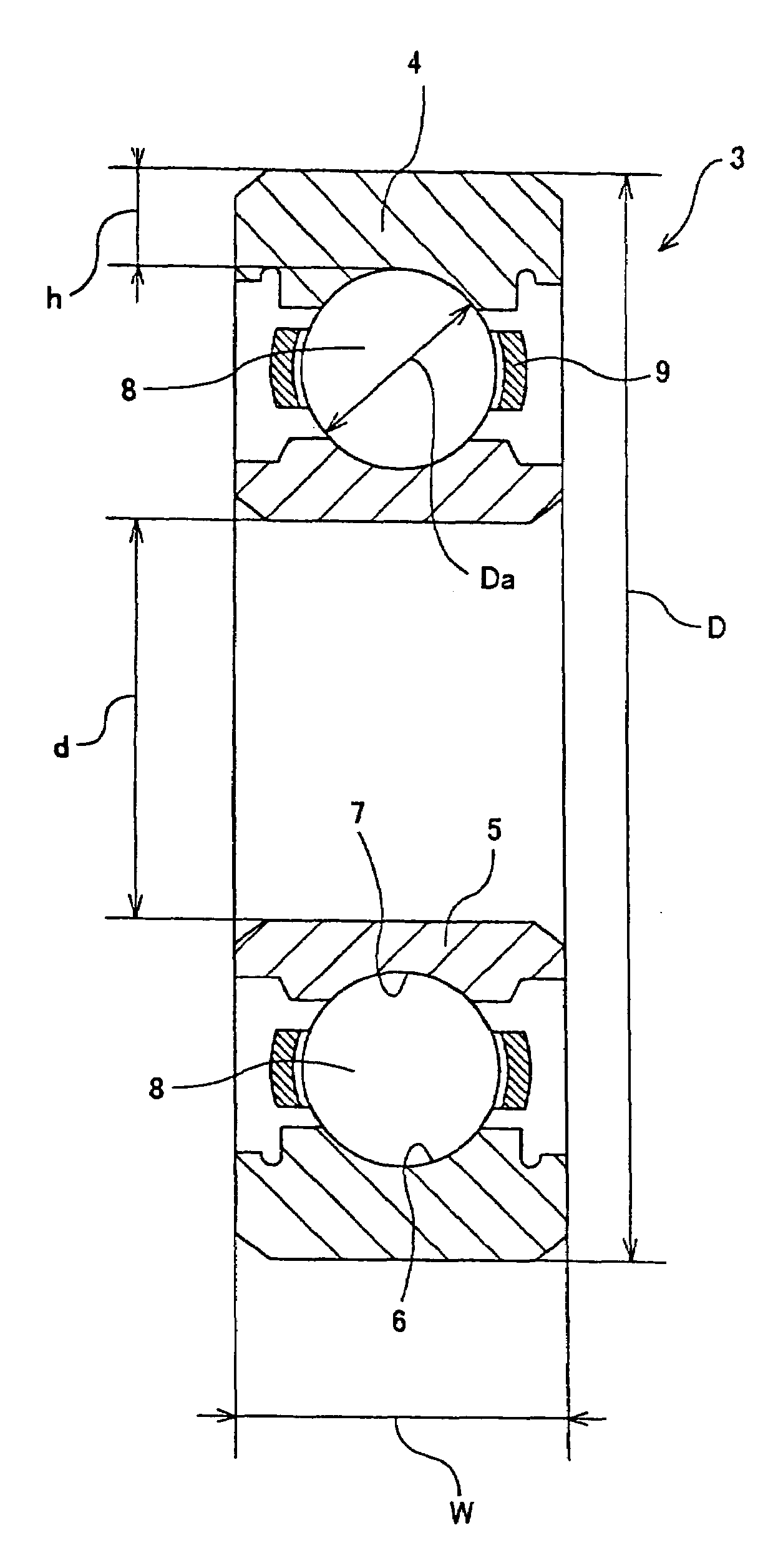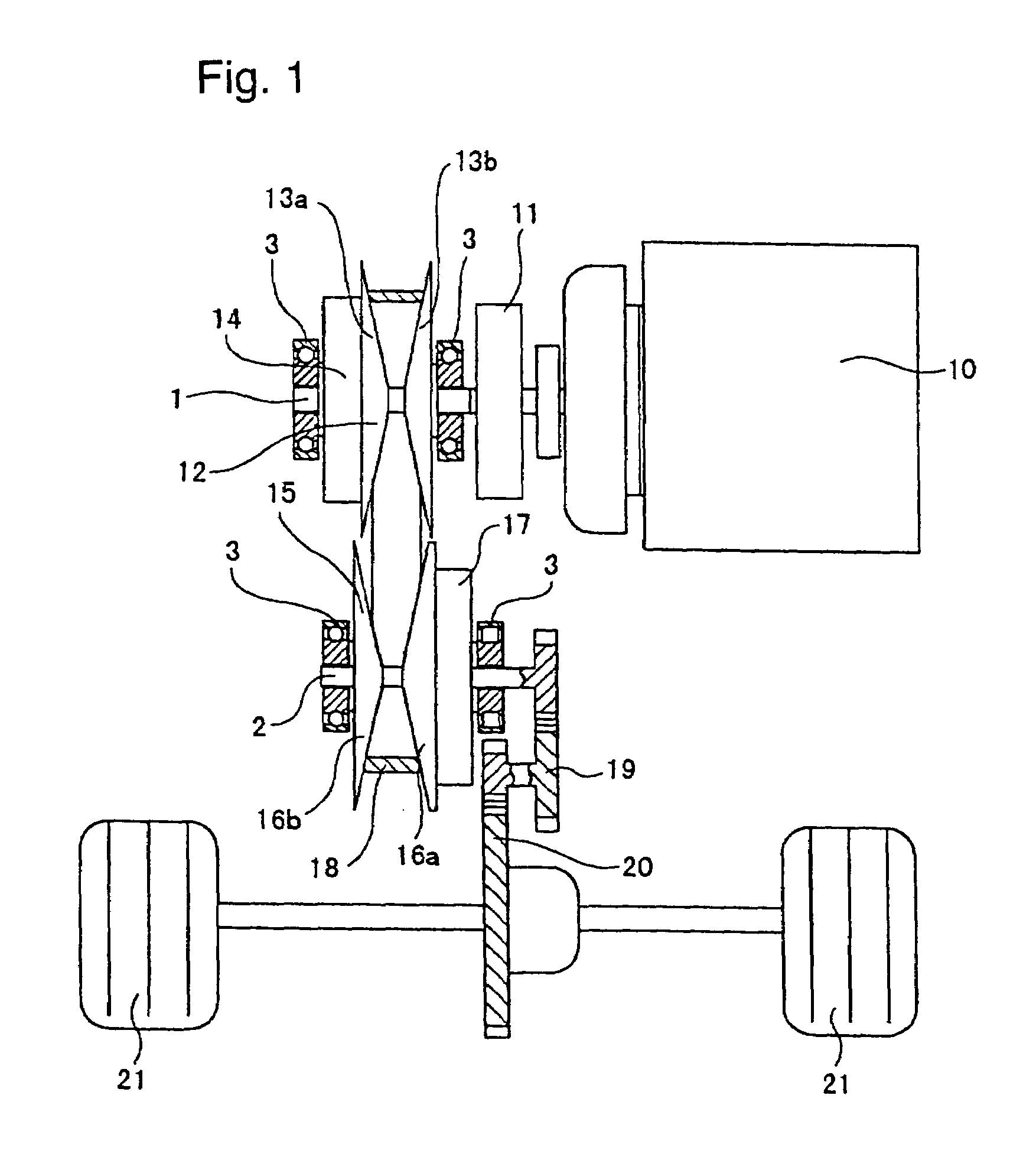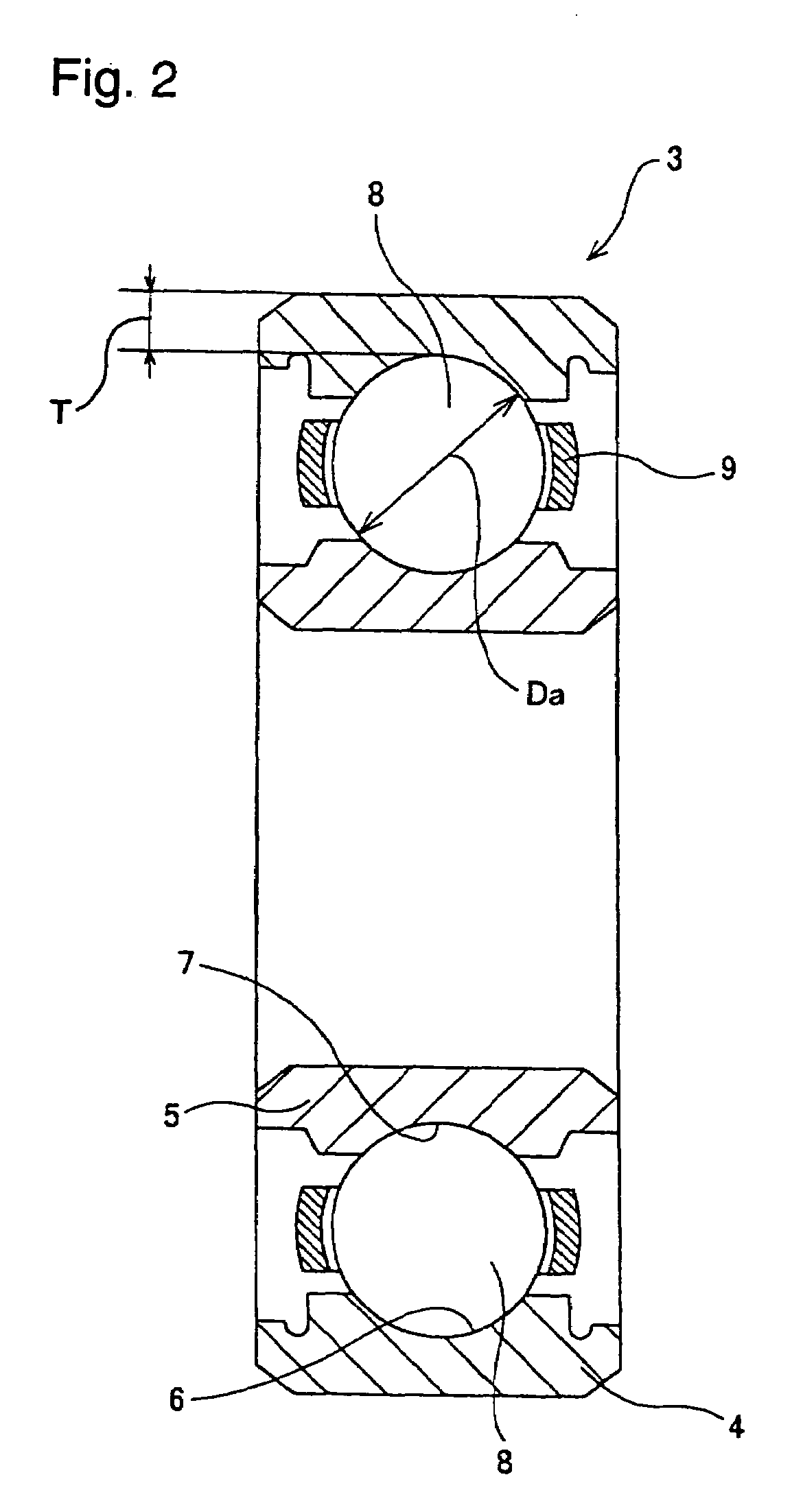Rolling bearing
a rolling bearing and bearing technology, applied in the direction of gearing details, mechanical equipment, gearing parts, etc., can solve the problems of reducing the durability of rolling bearings, reducing the rigidity of outer ring, and increasing the cost of the bearing. , to achieve the effect of increasing the size preventing premature flaking based on elastic deformation and sufficient rigidity of the outer ring
- Summary
- Abstract
- Description
- Claims
- Application Information
AI Technical Summary
Benefits of technology
Problems solved by technology
Method used
Image
Examples
examples
[0054]Next is a description of an experiment conducted to verify the effects of the present invention. In the experiment, as shown in the following Table 1, durability was respectively measured on a total of 14 samples: ten samples (examples 1 through 10) being within the technical scope of the present invention wherein the minimum thickness h of the outer ring 4 was between 0.4 and 0.8 times the diameter Da of the rolling elements (balls) 8, and four samples (comparative examples 1 through 4) being outside the technical scope of the present invention. These samples were based on JIS name-number 6209 (inner diameter d=45 mm, outer diameter D=85 mm, width W=19 mm, ball diameter Da=11.906 mm) and JIS name-number 6310 (inner diameter d=50 mm, outer diameter D=110 mm, width W=27 mm, ball diameter Da=11.906 mm) ball bearings, and were adjusted to the dimensions noted in Table 1 below by respectively varying the outside diameter of each outer ring and the diameter of the balls.
[0055]
TABLE...
PUM
 Login to View More
Login to View More Abstract
Description
Claims
Application Information
 Login to View More
Login to View More - R&D
- Intellectual Property
- Life Sciences
- Materials
- Tech Scout
- Unparalleled Data Quality
- Higher Quality Content
- 60% Fewer Hallucinations
Browse by: Latest US Patents, China's latest patents, Technical Efficacy Thesaurus, Application Domain, Technology Topic, Popular Technical Reports.
© 2025 PatSnap. All rights reserved.Legal|Privacy policy|Modern Slavery Act Transparency Statement|Sitemap|About US| Contact US: help@patsnap.com



